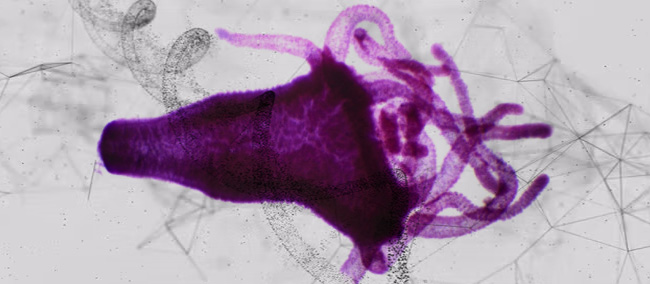
If you’re familiar with Greek mythology, you’ve probably heard of the Hydra – a gigantic multi-headed serpent that regenerates two heads for each one it loses. It is after this creature that a small freshwater invertebrate is duly named. The Hydra vulgaris, also known simply as Hydra, is a unique organism that exists in a continuous state of renewal. Cut off its head, and it will grow a new one. How it does this, however, has fascinated scientists for centuries who hope that studying this creature may someday lead to regeneration-like healing solutions for humans. One field of study that may shed light on Hydra’s healing powers is epigenetics.
While other organisms can regrow certain tissues, like a tail or tentacle, Hydras are particularly unique in that they can regrow any part of their body that is severed, even their head. This ability makes them an ideal organism to study for developmental and cellular biologists. In addition to their regenerative ability, they can reproduce asexually and do not appear to age or, at least, die from getting older. Unless they are killed, they will continue to live and clone themselves indefinitely.
To learn more about this seemingly immortal organism, researchers from the University of California Irvine sought to determine which genes and epigenetic interactions allow Hydras to regenerate. Focusing primarily on gene expression changes, the team led by Dr. Mortazavi Professor, Developmental & Cell Biology School of Biological Science discovered that during separate stages of a Hydra’s life cycle there are several distinct differences in regulation brought on by epigenetic modifications.
Epigenetic modifications occur when tiny chemical tags are attached to particular places on the DNA strand, changing the action of genes. These marks do not alter the genomic sequence. Instead, they instruct the cells on what to do or how to act. Accumulating evidence over the years has found that epigenetic factors are involved in regulating cellular gene expression required for tissue redevelopment. Epigenetic mechanisms that affect gene expression include DNA methylation, chromatin remodeling, and histone modifications.
In the current study, the researchers decapitated the Hydra to determine which genes were expressed during head regeneration compared to how they reproduce asexually via budding. They found that over 27,000 chromatin elements were active (or open chromatin) in one or more segments of the Hydra’s body or restored tissue. Then, using a technique to analyze protein interactions called histone modification ChIP-seq, they also identified nearly 10,000 proximal promoters and a little over 3,000 candidate enhancer-like elements in the Hydra’s genome.
Their analysis indicates that a subsection of candidate regulatory elements is dynamically remodeled throughout the head regeneration process. They also determined that a group of transcription factor motifs in the regions activated during head regrowth are enriched and include developmental transcription factors.
This study, which was published in Genome Biology and Evolution, is the first to identify the specific genomic regulatory elements that are modified during Hydra’s full head restoration, giving insight into how this organism and others can turn on or off genes as needed. Furthermore, it also differentiates hydra’s head regeneration from its asexual reproduction.
According to author Aide Macias-Muñoz, PhD., “Even though the processes are different, they still use the same developmental factors or genes, just in different ways. I think that’s because it’s easier to co-opt things that are already doing something. They’re already being used in development to develop a head, so why not use similar things to develop a head again? But this is a different process because you need to do it very quickly and stop it at some point.”
While the study identifies the candidate genes and transcription factors involved, more research is needed to test and confirm their roles in driving regeneration. Follow-up research that supplements this analysis with single-cell studies is already underway. Macias-Muñoz says she hopes to learn more about how cells assume different roles in response to decapitation versus typical development. She believes that single-cell evaluation will help trace the connections that have already been identified.
Furthermore, the epigenetic datasets and heatmaps produced from this study will allow evolutionists to examine how regeneration first emerged in organisms. It is still unknown whether this capability arose in some ancient organism or if the Hydra and other similar species developed the capacity independently. Imaginably, understanding more about the regeneration process could someday lead to helping humans repair damaged tissue or missing limbs.
Source: R. Murad et al. (2021) Coordinated Gene Expression and Chromatin Regulation during Hydra Head Regeneration. Genome Biology and Evolution.
Reference: Dan Robitzski. How Hydras Regenerate Decapitated Heads. The Scientist, December 14, 2021.

